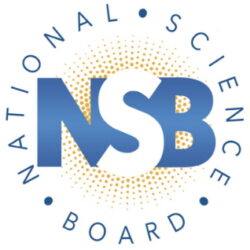The Ongoing Evolution of Universities into Newsrooms
This post by Maxine Newlands originally appeared at The Conversation, a Social Science Space partner site, as “Are universities turning into giant newsrooms?”
 Like many of my fellow journalism lecturers, I often get asked for tips on turning academic research into journalism pieces.
Like many of my fellow journalism lecturers, I often get asked for tips on turning academic research into journalism pieces.
These requests have been getting more frequent. It’s a compliment, but why is there a sudden interest in making academic work more accessible?
The answer could lie in the blurring boundaries of academia, social media and altmetrics.
Altmetrics and social media
Traditionally the way governments and funding bodies evaluate research has been left wanting. Usually “research impact” and a scholar’s reach has been measured in a few ways, usually through narrow citations counts or through peer review.
Article level metrics (altmetrics) are becoming the new currency to measure research impact. They measure reach through article views, downloads, traditional media or mentions in social media.
The past five years has seen a bunch of altmetric and social media websites that help measure individual research performance. Increasingly, social media is triggering further collaboration and changing how we produce knowledge, providing another space for practicing scholarship.
A recent study on the connection between Twitter and academia shows social media speeds up interdisciplinary research to create “new connections with other scientists, which can lead to the development of new collaborations and scientific outputs… [and] promote the popularization of scientific findings.”
A new model for publishing
Many academics agree the current model is outdated, favors journal publishers, and needs updating. The San Francisco Declaration on Research Assessment (DORA) recommends greater use of altmetrics to “encourage a shift toward assessment based on the scientific content of an article rather than publication metrics of the journal in which it was published.”
Dr. Jackie Wolstenholme, research service librarian at James Cook University, found:
Individual researchers can use the internet to promote their own work … [as] we’re moving from promotion at the level of the journal to article level. So where you publish will become less important.
The message is simple; “publish early, publish often.” Being published early is key to success, future promotions, and funding opportunities.
Critics argue that altmetrics are open to robot tweeting – false hits and data distortion – while it plays on fears around funding and jobs, and social capital – are we who we say we are in the virtual world?
Both ways, social media with altmetrics aid the sense of speed, while adding to the blurring of boundaries between journalists, educators, and academics.
With networks and data becoming key units of measurement by universities, NGOs, governmental departments, and institutions, websites that record hits, clicks and likes will become more prominent.
Beyond the lecture hall
Universities find metrics useful to know who they are reaching, what kind of articles are having an impact, what sort of topics are getting them talked about.
The university is not alone in measuring by social media and altmetrics. Government funding bodies, institutions, and public policy makers are increasingly making big decisions based on data.
According to Jackie Wolstenholme, writing in a conference paper for the Journalism Educators Association of Australia, data and altmetric is the currency of how research is measured as the world we are living in now there’s a much faster turnaround.
Traditional routes are too slow, with an average of three years to measure the impact of an article. Altmetrics is going to be so useful for addressing other kinds of impacts, such as funding… The reason is that governments want a return on their investment… also the funding structure that the government uses is often used by other funding bodies.
Academics can no longer separate altmetrics, social media, journalism, and the practice of journalism from their outputs.
The emergence of data and data-knowledge as a key currency suggests that future journalists and academics will be measured not for their articles but the number of citations, hits, and below the line comments a piece of research receives.
At some point we might stop asking how to make research papers accessible, as journalism, social media, and altmetrics become the stalwarts of an individual’s reach.![]()





















































































